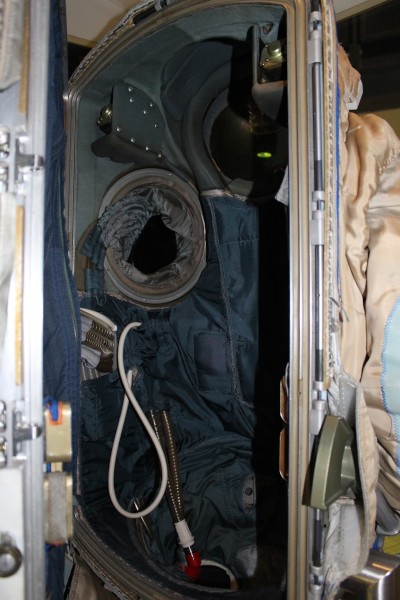#80 VIV
In chapter 7, Ryland first dons an EVA suit in order to obtain the cylinder delivery from the Blip-A. Though he repeatedly questions his own actions (“What am I doing?” 07.098), he ultimately decides that the potential gain of extraterrestrial knowledge is worth the risk. To his surprise, operation of the suit comes naturally to him (“I’m good at this” 07.106).
Space suit designs have been in a constant state of evolution since the earliest example, the SK-1, protected Yuri Gagarin on the 1961 journey aboard Vostok 1 that crowned him with the title of first human in space. Less than a month later, Alan Shepard traveled into space wearing the Mercury suit; Shepard’s experiences immediately inspired improvements for future Mercury pressure suits, such as increased wrist mobility and a more convenient... toilet situation.
Extravehicular activity (EVA) suits are those designed for astronaut activities which take place outside a spacecraft, including spacewalks, lunar surface exploration, and special moments when you “have a date with a cylinder” 07.087.
Ryland observes differences between his Russian Orlan suit and American space suits such as NASA’s Extravehicular Mobility Unit or EMU, thinking to himself: “The Orlan-MKS2 is possibly the best EVA suit ever made, but it doesn’t have a SAFER unit like NASA’s EMU suit” 07.108. SAFER stands for Simplified Aid for EVA Rescue, and is a miniature jetpack attached to the EMU suit with thrusters that allow an untethered astronaut to fly back to the ship.
He also reflects on the easy-to-operate “chrysalis” nature of the Orlan. Whereas the EMU consists of a hard upper torso which connects via a metal seal to the separate lower torso (pants and boots), the one-piece Orlan suit is entered through a hatch in the back. The image below shows the Orlan DMA EVA suit on display at the National Space Centre, with the backpack entry hatch opened:

But hey, at least I was learning a lot about how Russian EVA suits worked.
17.073